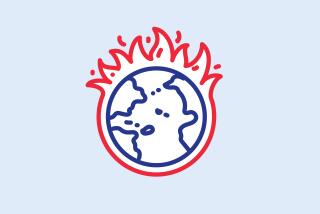Banks Will Offer $10-Billion Plan to Bolster FDIC : Banking: The industry would use its own money to preclude a taxpayer bailout of the deposit insurance fund. The proposal comes as Congress is considering expanding banks’ powers.
- Share via
WASHINGTON — The banking industry has prepared a plan to contribute $10 billion over the next two years to avoid a taxpayer bailout of the troubled fund that insures savings deposits, industry officials said Sunday.
The plan, which will be presented to federal regulators on Tuesday, calls for banks to purchase a special issue of bonds from the Federal Deposit Insurance Corp. The bonds would be sold periodically whenever the federal insurance fund is running dangerously low on money needed to shut down insolvent banks.
The bankers will present their plan to FDIC director L. William Seidman without linking it specifically to hopes for a major expansion of bank powers-unfettered movement across state lines, and full entry into the sales of securities and insurance.
But they feel that a demonstration of the industry’s ability to keep the insurance fund solvent without dipping into the Treasury would create a favorable climate in Congress for legislation granting expanded powers. And bankers hope that it will show the public and federal government that the industry is basically healthy and efficient.
The deposit insurance fund, which guarantees deposits up to $100,000, would need $10 billion to $15 billion to handle anticipated failures this year and in 1992, FDIC director Seidman has told Congress. The FDIC already has authority to borrow $5 billion from the Treasury. An industry infusion of $10 billion should be sufficient unless a prolonged deep recession increases the fragility of the banking system, regulators and bankers believe.
Bankers say they believe that the FDIC has the power to issue the bonds without congressional approval because the plan would not involve taxpayer funds. If approved by Seidman, the plan could began to generate funds as soon as banks begin to buy the specials bonds, industry officials say.
The plan was developed by officials at five major bank trade associations. Directors and influential members of the associations considered the plan during the weekend and final approval is expected today.
The proposal “gives the bank fund real money right away,” said one industry official. “It does specifically avoid any direct taxpayer pay-in,” he emphasized.
Banks would buy the bonds, just as they buy other government securities. But in this case, the banks-not the taxpayers-would repay the bonds. The money for repaying the principal and interest on the bonds would come from the premiums banks pay into the insurance fund, and from special assessments.
The special levy would be linked to the total assets of a bank, a formula requiring the big banks to pay more. The special assessments would be used instead of permanently raising the annual premiums paid by all banks--a more drastic step that banks oppose.
“We do not want to make the change permanent, because it would become harder to attract bank capital in the future,” said an official familiar with the industry proposal.
The formula requiring big banks to pay more was a concession aimed at winning the support of community banks and other small institutions for the insurance fund rescue plan. The community bankers have long felt it was unfair that major banks don’t pay insurance premiums on deposits in their foreign branches.
It is possible that the smaller banks may “bolt on the issue of foreign deposits” and refuse to support the plan developed by the trade groups, according to an industry official.
The financial modernization issue also could splinter the coalition that developed the proposal to bolster the insurance fund. The smaller banks are worried about big financial institutions coming across state lines into local markets. Their representatives strongly opposed any direct linkage between the insurance fund issue, and the question of giving banks new powers.
The current draft version of the industry letter to Seidman discussing the rescue plan does not connect the two issues.
The industry plan also is expected to call for creation of a new system to provide capital for troubled banks to keep them from falling into insolvency. This early warning system woulld strengthen banks, enabling them to stay in business to attact a merger partner. The insurance fund would save money because insolvencies would be averted.
Bankers want the Federal Reserve system, which does not pay interest on bank reserves it holds, to supply $2 billion for this early intervention fund.
The Bush Administration, which is a strong advocate of new powers for banks, has refrained from developing its own plan to bolster the deposit insurance fund. Both the Administration and Congress, struggling with a rescue of the savings and loan insurance fund that may consume $130 billion in taxpayer funds, are eager for the banking industry to solve the problem.
More to Read
Inside the business of entertainment
The Wide Shot brings you news, analysis and insights on everything from streaming wars to production — and what it all means for the future.
You may occasionally receive promotional content from the Los Angeles Times.










